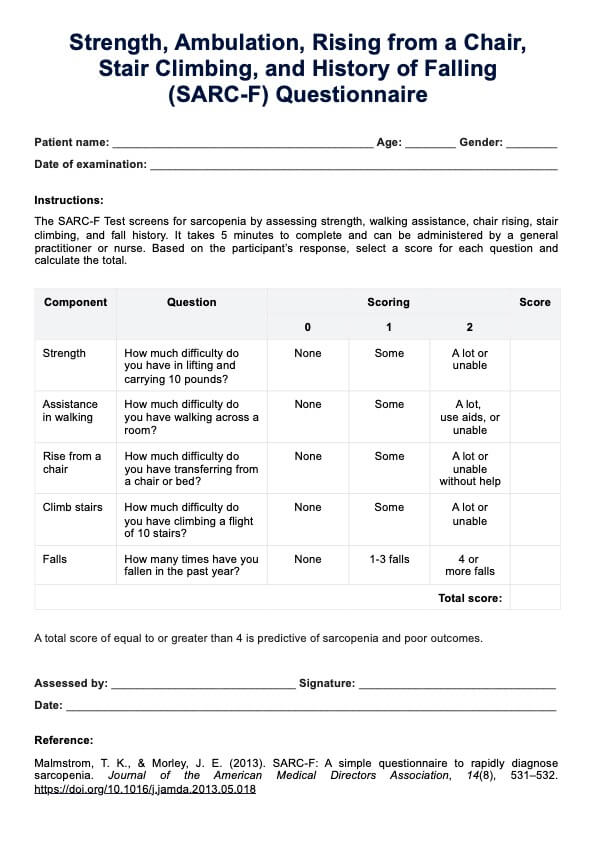No medications are currently approved to treat or cure sarcopenia, but specific treatments and supplements can help manage and slow its progression.

SARC-F Questionnaire
Use the SARC-F Questionnaire for sarcopenia diagnosis. Easy to administer and helps in early identification and management.
SARC-F Questionnaire Template
Commonly asked questions
The SARC-F Questionnaire includes five components: assessing strength, difficulty climbing stairs, walking ability, frequency of falls, and overall muscle weakness. Each question helps evaluate different aspects of muscle health and function.
Baumgartner et al. performed DEXA (bone-density) scans to measure muscle mass in the four limbs of the body, defining the skeletal muscle mass index (SMI) as appendicular skeletal muscle mass (ASM) divided by height squared (kg/m²). Sarcopenia was identified when an individual's SMI was two standard deviations below the average of a reference group of middle-aged men and women (Rolland & Yves, 2010).
EHR and practice management software
Get started for free
*No credit card required
Free
$0/usd
Unlimited clients
Telehealth
1GB of storage
Client portal text
Automated billing and online payments











